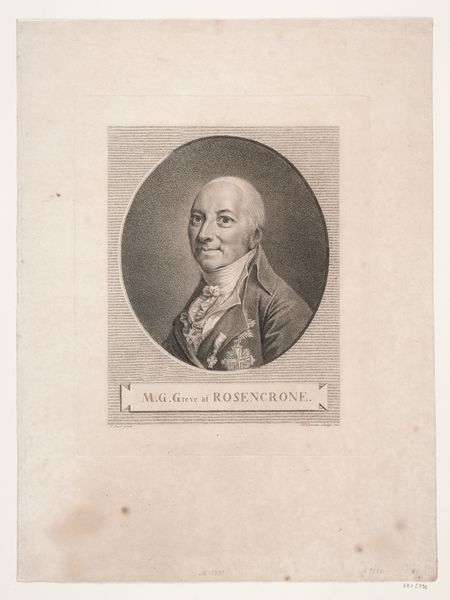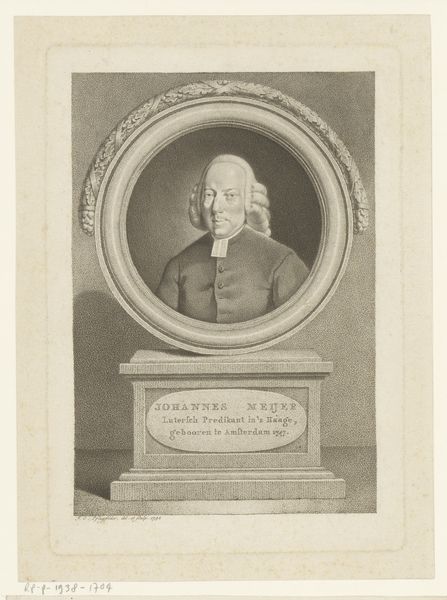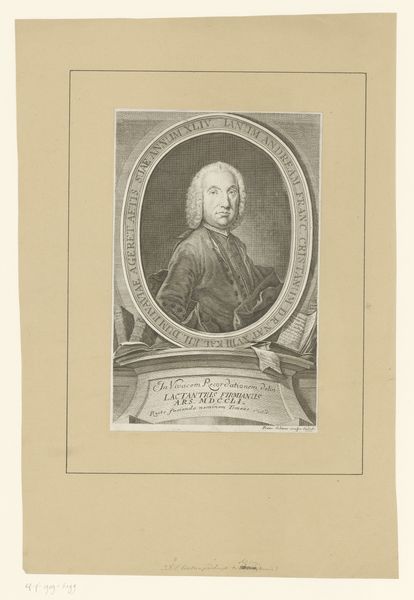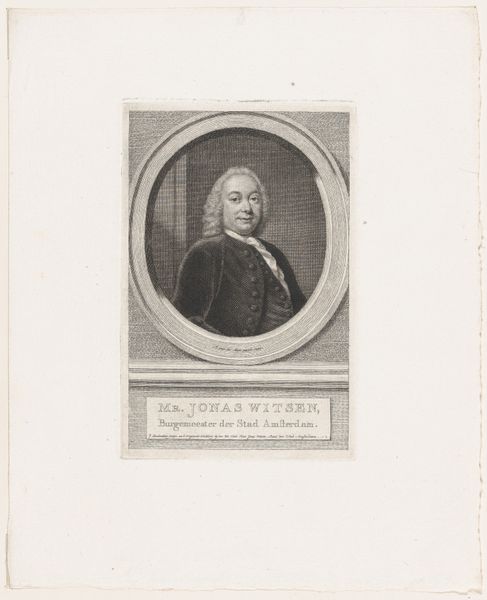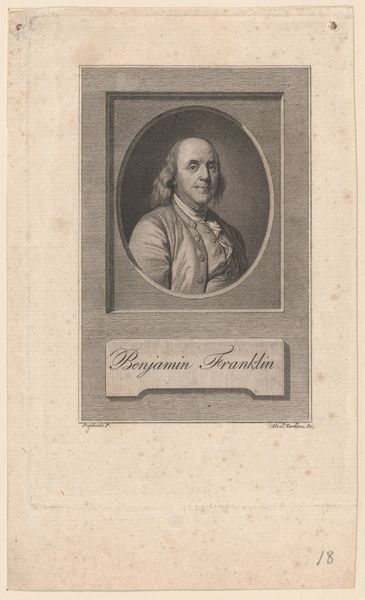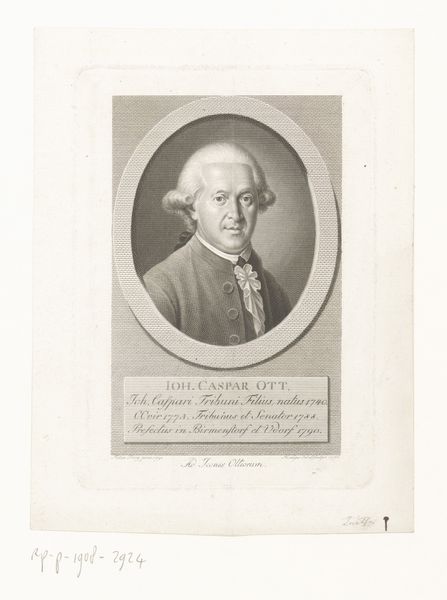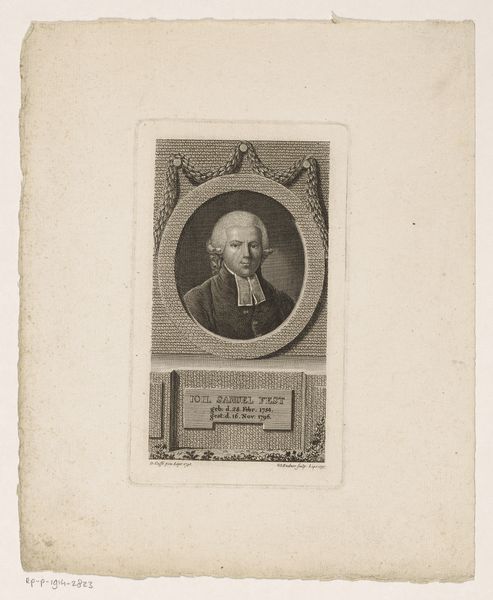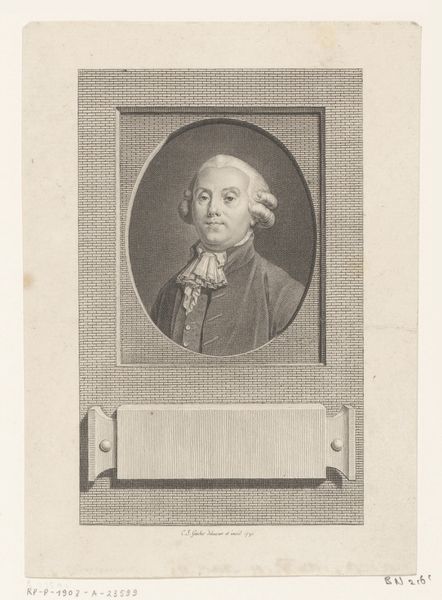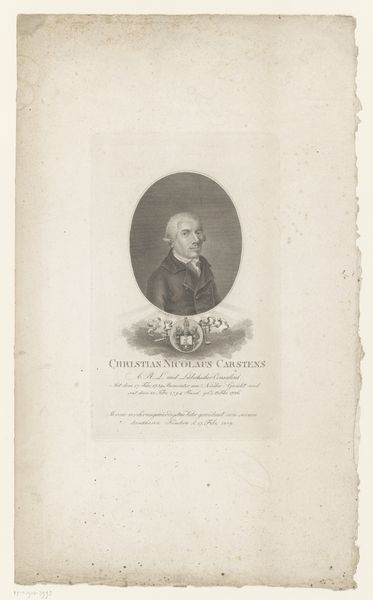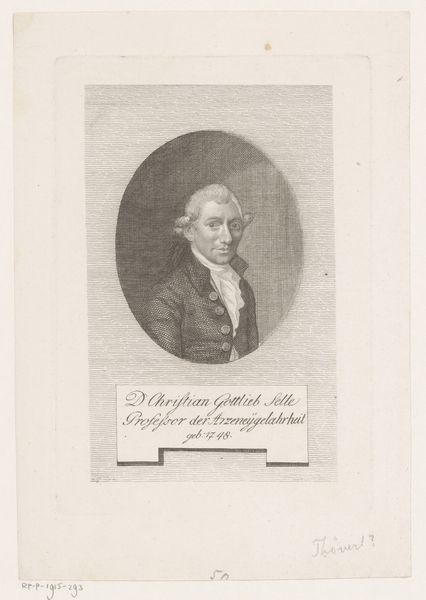
engraving
#
portrait
#
neoclacissism
#
engraving
Dimensions: height 182 mm, width 119 mm
Copyright: Rijks Museum: Open Domain
Curator: This is Georg Friedrich Schmidt's 1774 engraving, "Portret van Anton Friedrich Büsching," currently held in the Rijksmuseum. It presents the subject in an oval frame above an inscribed plaque. Editor: The coolness of the gray monochrome is quite striking, giving a formal yet oddly detached air to the subject. I am immediately drawn to the tonal variations achieved solely through line work. It's impressive. Curator: Indeed. Schmidt masterfully uses the engraving technique to emulate tonal variation through controlled mark-making. Note how the cross-hatching creates shadow and volume, and how strategically he alters its density to articulate form. The portrait encapsulates the Neoclassical return to order and structure. Editor: Looking closer, the labor intensiveness is inescapable. Consider the repeated cutting, the pressure of the burin on the plate. Engraving of this type necessitated significant craft expertise. But consider also its purpose: reproducing and circulating images, creating a form of knowledge distribution tied intimately to print culture. Curator: Certainly, and that context illuminates the very essence of Neoclassical portraiture, where rationality and reason held supreme value. It seeks to represent not only likeness but the intellectual status of the sitter. Look at how the globe peeks out behind his shoulder, acting as a testament to his geographic prowess! Editor: A detail easily missed, yes. The man is performing his identity in this piece as much as the artist is depicting him. That brings to light issues of class and labor, which is that Schmidt had the resources to be meticulous while his print serves as an endorsement for his subject, one scholar of geography. It reflects the world as it was consumed and the tools by which knowledge was dispersed. Curator: I'd agree; examining it structurally does not necessarily detract from its impact, it allows a deeper connection. The sharp, defined lines capture a very specific moment, almost a stillness in history. Editor: Yes, understanding both the artistic production and the material context enriches the viewing experience and helps me recognize that it is not just about what is depicted, but the processes, people, and purposes interwoven into its creation.
Comments
No comments
Be the first to comment and join the conversation on the ultimate creative platform.

